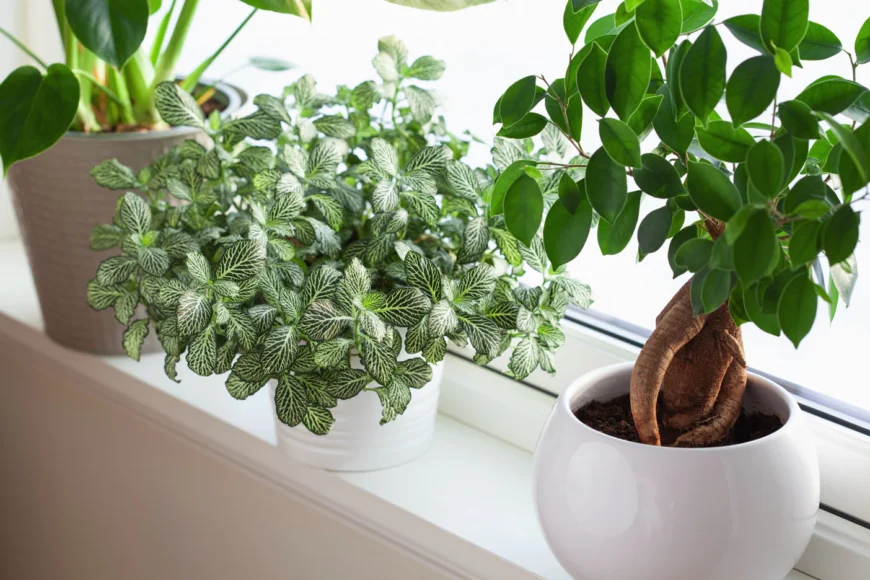Bringing live plants into your home can be an enjoyable and rewarding experience. Whether you’re new to caring for houseplants or a veteran, this guide will provide you with all the information you need to keep your houseplants healthy and thriving.
Get the Right Pot and Media.
Before you buy a houseplant, think about the environment you’re providing for it. Different plants have different requirements when it comes to getting the right pot and media. The pot should be big enough to allow enough root space. Consider the size of the plant’s root system and choose a pot to fit your plant’s needs. For many plants, an all-purpose potting soil with drainage will work just fine. Some plants prefer a bulky, chunky soil for drainage, while succulents require a cactus soil.
Choose the Best Location.
Every houseplant needs light and air to thrive. Different varieties of plants require varying levels of light, so it’s important to figure out your environment before you buy a plant. Gauge the lightsource for your plants like this:
- Low light
- Medium indirect light
- Bright indirect light
In addition, be aware of temperature fluctuations in the area and make sure to keep it away from drafty windows, radiators, and air conditioning vents.
Determine the Ideal Lighting Conditions for Your Plant.
Knowing the right lighting conditions for a plant is key to its well-being. Depending on the species, some may need more light than others to thrive and be healthy. Start by researching what type of light your plants require and if they need high lumens or low to medium depending on the intensity of the rays. Once you have determined what kind of light the plant requires, you can gauge if that plant is going to thrive in the location that you want to put it in. It’s also important to note that too much sun can cause yellowing or burning of leaves so be sure not to place your indoor plants in direct sunlight for extended periods.
Water and Fertilize Mindfully.
Too much water and fertilizer can damage your houseplants as easily as too little, so learning when and how much to water your plants is essential. Opt for a liquid fertilizer with the right ratios of nitrogen, phosphorus, and potassium to ensure optimal plant growth. Water the plant accordingly—avoid overwatering or underwatering, which can negatively affect its health.
Be sure you water your houseplants thoroughly when you water. Knowing your plants is important so that you’re giving adequate amounts of water at the proper intervals based on the location and lightsource.
Watering your houseplants is essential for keeping them healthy and vibrant. But if you’ve been a little too generous with the watering can, then you may start to see the telltale signs of overwatering – from drooping leaves to fungal problems to root rot.
Questions about fertilizing and feeding your houseplants? Our knowledgeable staff will help you select the right products for the condition and type of houseplant.
Different plants have different nutrition requirements, and it’s important to pay attention to what your plant needs. For example, cacti require minimal nutrients and might even burn if over-fertilized. Ferns, on the other hand, need more frequent feedings in order to thrive. Research the nutritional needs of your houseplant species so you can provide the necessary fertilization on a schedule that works best for its specific requirements.
Monitor Temperature and Humidity Levels.
Temperature and humidity levels should also be monitored for optimal growth. Houseplants tend to thrive best when kept in temperatures between 60-85°F, as well as a humid environment of at least 40%. You can increase the humidity around your plants by misting them once or twice a day, preferably with distilled or filtered water. Additionally, you can invest in a humidifier, especially if they are housed in an area with low natural humidity such as near a heater vents or air conditioning unit.
Winters in Wisconsin homes are dry – so you’ll need to pay more attention to humidity levels for your houseplants during this time of year.
Actively Adjust Your Plant’s Lighting as Seasons Change.
With the changing of seasons, your plant’s lighting needs may also change. A houseplant that receives too much or too little light as a result of season changes can become hindered in its growth or die. To properly adjust for these natural changes in light exposure, it is important to regularly observe the plant and monitor if additional lighting protection or sun exposure is needed. Move plants closer or further away from windows accordingly, and add artificial lighting sources if necessary. This active adjustment will enable your plant to remain healthy and grow strong roots with plenty of color!
More About Houseplants
Want to learn more about houseplants at Thomas Greenhouse & Gardens? We have great resources for


